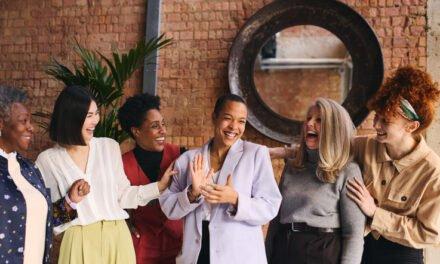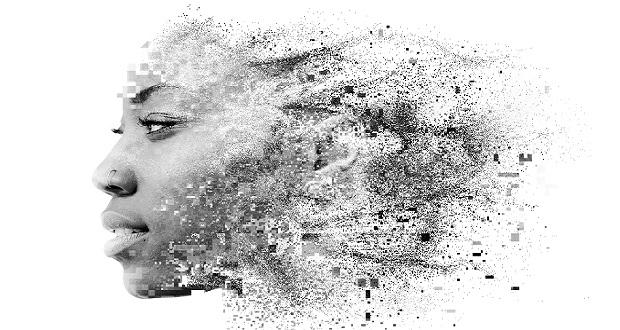
As we’ve discussed the various aspects of and important questions to ask at the intersection of social justice and D&I work, I consistently realize that language matters. The words we use and how we use them matter, for better or for worse.
A few months ago, L’Oréal cut ties with British model Munroe Bergdorf, the first transgender model to represent the brand, over a Facebook post in which she called out systemic racism after Charlottesville by saying, “Honestly I don’t have energy to talk about the racial violence of white people any more. Yes ALL white people. Because most of ya’ll don’t even realise or refuse to acknowledge that your existence, privilege and success as a race is built on the backs, blood and death of people of colour. Your entire existence is drenched in racism.”
When L’Oréal ended its contract with Bergdorf, another black model Clara Amfo decided to pull out of a L’Oréal campaign in solidarity. L’Oréal made a statement that although they believe in and champion diversity, Bergdorf’s words did not reflect their core values.
I remember seeing this situation on Twitter and thinking, “Go Bergdorf! Go Amfo! Way to call out this system we all live in.” I remember thinking that L’Oréal is cool with “diverse” models but not with acknowledging their actual realities and the realities of the systems in which we live. And this may all be true, and I tend to be on #TeamBergdorf, but it’s also true that, regardless of the genuineness of L’Oréal’s intentions or motivations, Bergdorf was speaking the language of activism—not organizational change. She may have been speaking for social justice, but not in a way that her employers were able to hear it (Note: she was not speaking about her organization in the Facebook post, but her language was the reason her organization cut ties). While I am careful to not police people’s language and approaches when speaking out against injustice, especially in the wake of a tragedy like Charlottesville, I also think it’s necessary to acknowledge that the way we communicate and dialogue with one another impacts whether or not we learn and what we learn. We can say whatever we want however we want, but the results may not be what we expect.
On August 9th, 2014 Michael Brown was killed by police officer Darren Wilson in Ferguson, Missouri. I was in school in St. Louis at the time, and some of my friends took to the streets to cry out for justice while other friends became more and more exasperated with “all the yelling” and “all the blaming” that made its way onto campus. As a result of their anger, they became more entrenched in their willful ignorance of the systemic injustices that had played out before us. It was a peak “It’s not my fault I’m white” moment that coincided with a moment in which people of color were too angry and exhausted by injustice to just sit back and wait for change. This is not the only narrative of that time, but it is one that continues to divide my alma mater’s campus and a similar narrative plays out across our country as we become more and more polarized.
Since that time, I have wondered what effective “calling out”, “speaking out”, and dialogue that leads to transformation actually looks like. For me and most activists I talk to, marching in the streets or demonstrating at city hall are not necessarily about changing the minds of those who walk by but about being surrounded by like-minded community and creating a disruption that makes people take notice, modeling the disruption they are calling for in our unjust systems. Their continuous showing up in 2014 and beyond created a movement, and the groundswell of creative, committed, and courageous youth has made St. Louis—and the world—take notice. They found community in their collective pain and in the collective fight. But, does their language, and the language of Munroe Bergdorf as well, change hearts and minds for the long term, or is it just a trigger for a conversation going nowhere?
It depends, as always, on the context. Speaking out or advocating for equity in organizational settings should disrupt – it should disrupt our complicity, our silence, our ignorance, etc. In that sense, D&I professionals and anyone looking to make change in an organization can learn from our current (and past) activist movements. Colin Kaepernick, Black Lives Matter activists, the women who attended the Women’s March, those who attend Pride (not a protest but still a marginalized group claiming and celebrating their identities and humanity)– all these groups and people disrupt and create conversation.
However, the disruption of organizational spaces should look differently because the space is different. The purpose is different. The timeline is different.
Activists create disruption so that people take notice of injustices happening on the outside in their communities and in the world, and while that is a goal of organizational D&I, our first goal is to create disruptions that make people take notice of what’s happening inside—what am I thinking and feeling and why? We don’t change in one fail swoop, in one conversation, in one session. Activists know this; it’s why they keep showing up, keep disrupting, keep questioning. The disruption we create in organizational settings should be just as relentless even if less exciting or newsworthy. It should be relentlessly brave, inclusive, and intentional. Activism can be all these things too, but the language is different.
The language of activism does not necessarily meet people where they are – and that’s okay because that’s not the purpose. But, we can do that in our organizations without sacrificing social justice. The common purpose is to disrupt the status quo and project a vision of where we should and could be. The difference with organizational change is that we have to be there for all the steps in between, and our language should reflect as such. We should create that initial disruption, but we have to accept how people react to it and who they know themselves to be. We have to sit with them as they figure out why and how and who and what. Only then do we get to walk with them towards something better.
And here’s the thing: these languages – that of the activist and that of the organizational change agent or D&I practitioner – can and should coexist because at the core of both is social justice. Without the initial disruption there would be no conversation or acknowledgement of a problem, but without the steps in between there would be no sustainable transformation. But we need interpreters.
Munroe Bergdorf spoke truth about the world we live in with her Facebook post, but organizations need people who can translate the language of her truth into consistent, challenging, honest dialogue that looks toward sustainable change. We need interpreters to stand at the intersection and find ways for us to see truth in one another’s realities so that the different languages we speak can bring us together rather than further the divide.

















